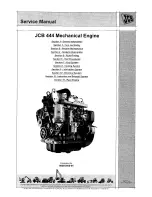
63-2188—4 B.B. Rev. 10-00
www.honeywell.com/building/components
SERIES 61 AND SERIES 62 MODUTROL IV™ MOTORS
Home and Building Control Home and Building Control
Honeywell Asia Pacific Inc. Honeywell Europe S.A.
Honeywell Latin American
Honeywell
Honeywell Limited-Honeywell Limitée
Room 3213-3225
3 Avenue du Bourget
Region
1985 Douglas Drive North
35 Dynamic Drive
Sun Hung Kai Centre
1140 Brussels
480 Sawgrass Corporate Parkway
Golden Valley, MN 55422
Scarborough, Ontario
No. 30 Harbour Road
Belgium
Suite 200
M1V 4Z9
Wanchai
Sunrise FL 33325
Hong Kong
OPERATION
Use Series 61 and Series 62 Modutrol IV Motors for standard
Series 60 operation (drive open, hold, drive closed). Series 62
motors can also be used with the feedback potentiometer as
an input to the controller.
See Table 6 for details on motor response to controller signals.
NOTE: Reverse the wires at either the motor or controller.
To reverse the rotation direction of a non-spring return motor:
1.
Reverse the wires at terminals 1 and 2.
2.
Reverse the wires at terminals Y and G.
Table 6. Modutrol IV Motor Operation.
CHECKOUT
After the installation and linkage adjustment, check the entire
motor and control hookup. Proper checkout ensures that:
• The motor operates the load (damper or valve) properly.
• The motor responds properly to the controller as the input
varies. See Table 6.
• The auxiliary switch, if used, operates at the desired point
of motor rotation.
1.
Inspect motor, linkage, and valve or damper to ensure
all mechanical connections are correct and secure.
NOTE: In damper installations, the pushrod should not
extend more than a few inches past the ball
joints.
2.
Ensure that there is adequate clearance for the linkage
throughout the entire motor stroke without binding or
striking other objects.
3.
Drive the motor fully open and fully closed. See Table 6.
NOTE: Refer to controller or system instructions for
additional checkout procedures.
4.
For spring return motors, ensure that the valve or
damper returns to its normal position when power is
interrupted.
5.
Return controller to the desired setting before leaving
the job.
REPLACEMENT
Damper Application
1.
Turn off power and remove wiring from the old motor.
2.
Remove the crank arm from the shaft of the old motor
and remove the old motor.
3.
Determine mounting bracket necessity. If the linkage
can reach the new motor shaft position and the crank
arm has clearance for the necessary rotation, the
bracket is not required. Use the 220738A Adapter
Bracket or the 221455A Crank Arm if the crank arm
must rotate through the bottom plane of the motor.
a. If no bracket is required, mount the new motor
directly to the equipment and refer to the
Installation, Settings and Adjustments, and the
Operation and Checkout sections.
b. If the bracket is required, refer to the Adapter
Bracket section and Fig. 3 in addition to the
Installation, Settings and Adjustments, and the
Operation and Checkout sections.
4.
Use No. 12 or 1/4 inch machine screws or bolts to
mount the new motor.
5.
Mount damper crank arm and linkage to the new motor
shaft.
6.
Use the Checkout procedures to test the crank arm and
linkage adjustment.
Valve Application
When replacing a motor in a valve application, the linkage
type determines the necessity for the 220738A Adapter
Bracket. With Q100, Q601 or Q618 Linkages, it is necessary
to use the 220738A to raise the motor shaft to the appropriate
height. Valve applications with a Q5001 Linkage do not
require the 220738A Adapter Bracket. To operate Honeywell
V5011 Two-way or V5013 Three-way Valves through full
stroke, use a 160° stroke motor.
Motor Type
Terminal Connection
Resulting
Action
Series 61 Series 62
Non-Spring Return
or Spring Return
R-W
4-1
ccw (closed)
R-B
4-2
cw (open)
Non-Spring Return None
None
stops (none)
Spring Return
-
None
spring return
(closed)






























